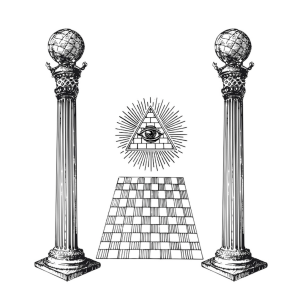 Masonic pillars, also referred to as Freemasonry pillars or Masonic columns, are symbolic representations within Freemasonry that hold deep meaning and significance. These pillars are often associated with two specific names: “Boaz” and “Jachin.” They are typically depicted as upright structures and are important symbols in Masonic philosophy, representing various concepts related to balance, wisdom, strength, and harmony.
Masonic pillars, also referred to as Freemasonry pillars or Masonic columns, are symbolic representations within Freemasonry that hold deep meaning and significance. These pillars are often associated with two specific names: “Boaz” and “Jachin.” They are typically depicted as upright structures and are important symbols in Masonic philosophy, representing various concepts related to balance, wisdom, strength, and harmony.
Here’s a breakdown of their symbolic meanings:
1. “Boaz“: This pillar is often associated with the left side and is named after the biblical figure Boaz. It represents strength, stability, and the material aspects of life. It serves as a reminder to Masons to cultivate inner strength and maintain a stable foundation in their principles and actions.
2. “Jachin“: Positioned on the right side, this pillar is named after the biblical figure Jachin, meaning “he will establish.” Jachin symbolizes wisdom, enlightenment, and the spiritual aspects of life. It signifies the establishment of moral and ethical values, encouraging Masons to seek enlightenment and personal growth.
The symbolism of these pillars underscores the balance between material and spiritual pursuits, encouraging Freemasons to strive for harmony in all aspects of life. The pillars are often depicted with globes on top, representing the Earth and the heavens, further emphasizing the duality and unity of human existence.
Masonic pillars are commonly featured in Masonic lodges as decorative elements and serve as reminders of the moral lessons and values taught within Freemasonry. It’s important to note that Freemasonry is an esoteric and fraternal organization with a rich history of symbolism, and interpretations of these symbols can vary among different lodges, jurisdictions, and traditions.